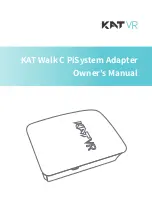
13
Conclusion
InfiniBand offers an industry standard, high-bandwidth, low-latency, scalable interconnect with a high
degree of connectivity between servers connected to a fabric. While zero-copy (RDMA) protocols
have been applied to TCP/IP networks such as Ethernet, RDMA is a core capability of InfiniBand
architecture. Flow control support is native to the HCA design, and the latency time for InfiniBand
data transfers is generally less—approaching 1 microsecond for MPI pingpong latency—than that for
10Gb Ethernet.
InfiniBand provides native support for fat-tree and other mesh topologies, allowing simultaneous
connections across multiple links. This gives the fabric the ability to scale or aggregate bandwidth as
more nodes and/or additional links are connected.
InfiniBand is further strengthened by HP-MPI becoming the leading solution among ISVs for
developing and running MPI-based applications across multiple platforms and interconnect types.
Software development and support become simplified since interconnects from a variety of vendors
can be supported by an application written to the HP-MPI protocol.
Parallel compute applications that involve a high degree of message passing between nodes benefit
significantly from InfiniBand. HP BladeSystem c-Class clusters and similar rack-mounted clusters
support IB QDR and DDR HCAs and switches.
InfiniBand offers solid growth potential in performance, with DDR infrastructure currently accepted as
mainstream, QDR becoming available, and Eight Data Rate (EDR) with a per-port rate of 80 Gbps
being discussed by the InfiniBand Trade Association (IBTA) as the next target level.
The decision to use Ethernet or InfiniBand should be based on interconnect performance and cost
requirements. HP is committed to support both InfiniBand and Ethernet infrastructures, and to help
customers choose the most cost-effective fabric interconnect solution.

































